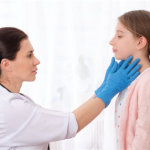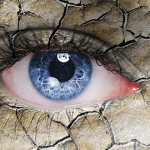“Sjögren’s [is] a wonderful example of a disease in transition and evolution,” says Frederick B. Vivino, MD, chief of rheumatology at Penn Presbyterian Medical Center and director of the Penn Sjögren’s Syndrome Center in Philadelphia. Dr. Vivino moderated a clinical symposium on Sjögren’s Syndrome (SS) at the 2009 ACR Annual Scientific Meeting in Philadelphia that brought together experts in dentistry, ophthalmology, and rheumatology about advances in diagnosis, treatment, and monitoring of this disease, as well as the burgeoning international collaborations to develop registries and disease activity indices.
Dryness Not Diagnostic
Although dry mouth and dry eyes are hallmark symptoms of SS, they are too nonspecific to be valuable in classification criteria, says leading Sjögren’s researcher Troy E. Daniels, DDS, MS, professor of oral pathology and pathology at the Schools of Dentistry and Medicine at the University of California, San Francisco. That’s because dryness of mucosal tissues can be attributed to a variety of other diseases and use of some medications. However, if clinicians are alert to indicators of salivary hypofunction, they can use these symptoms to steer them to the tests to be performed. Dental caries at the gingival margin, reduced or absent saliva pool in the floor of the mouth, reduced mucosal lubrication, and abnormal-appearing saliva expressed from the ducts are some of the intraoral indicators of salivary hypofunction. Signs of erythematous candidiasis are also common, characterized by loss of filiform papillae from the dorsal tongue, fissuring or erythema on the dorsal tongue, generalized patchy mucosal erythema, and angular cheilitis. Bilateral salivary gland enlargement may also be present.
In addition to the battery of standard blood tests (antinuclear antibodies, rheumatoid factor, erythrocyte sedimentation rate, and immunoglobins), the oral/salivary tests include measuring salivary flow, conducting salivary gland imaging, and doing salivary gland biopsies. However, none of these tests are yet diagnostically specific to Sjögren’s.
Efforts to develop standardized classification criteria have taken a leap forward since establishment of the Sjögren’s International Collaborative Clinical Alliance (SICCA). Dr. Daniels is SICCA co-director and reports that its National Institutes of Health funding was recently renewed until 2013. SICCA is made up of over 75 specialists from related disciplines and has launched an international registry to pool collection of data. Information about the registry, downloadable standard operating procedures for oral/salivary, rheumatologic, and eye examinations and baseline questionnaires used in the registry are available on the SICCA website at http://sicca.ucsf.edu. The growing cohort now includes more than 1,600 individuals. What the SICCA efforts are revealing is that no one symptom, sign, or test definitively defines Sjögren’s. For example, about 70% of Sjögren’s patients are positive for SS-A and 40% for SS-B, the marker antibodies for the disease. In the SICCA cohort, dry mouth or dry eyes were not associated with positive serum SS-A and -B. However, a combination of a focus score of greater than 1 on labial salivary gland biopsy, positive serum for SS-A and -B, and ocular staining are strongly associated with each other and form, says Dr. Daniels, “the core of what we now think of as Sjögren’s syndrome.”

